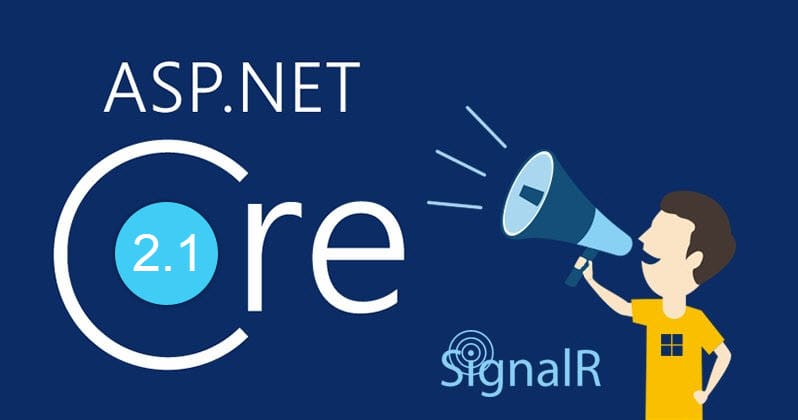Getting Started With SignalR, .NET Core 2.1 And Angular

About 3 months ago I wrote a post with the steps to set up SignalR for a new .NET Core 2.0 app with Angular. I thought it was really amazing how easy it was, but now that .NET Core 2.1 is available, no messing up with non-default npm and nuget sources required. And also SignalR comes by default.
Make sure you have the latest .NET Core SDK installed
Getting started
dotnet new angularcd ClientAppnpm install @aspnet/signalr
Creating new hub in the server side
This is like a controller in a MVC application which is responsible for interactions between the client and the server.
...
using Microsoft.AspNetCore.SignalR;
namespace SignalRDotNetCore21.Hubs
{
public class EchoHub : Hub
{
//you're going to invoke this method from the client app
public void Echo(string message)
{
//you're going to configure your client app to listen for this
Clients.All.SendAsync("Send", message);
}
}
}
Wiring up the server side in the Startup
In the startup.cs there are really only two things to put together.
public void ConfigureServices(IServiceCollection services)
{
...
services.AddSignalR();
}
public void Configure(IApplicationBuilder app, IHostingEnvironment env)
{
...
// If you're using the SPA template, this should come before app.UseSpa(...);
app.UseSignalR(routes =>
{
routes.MapHub<EchoHub>("/hubs/echo");
});
}
Wiring up client side
For testing purposes, I'm configuring the connection straight into the home component.
import { Component, OnInit } from '@angular/core';
import { HubConnection, HubConnectionBuilder } from '@aspnet/signalr';
@Component({
selector: 'app-home',
templateUrl: './home.component.html',
})
export class HomeComponent implements OnInit {
public hubConnection: HubConnection;
public messages: string[] = [];
public message: string;
ngOnInit() {
let builder = new HubConnectionBuilder();
// as per setup in the startup.cs
this.hubConnection = builder.withUrl('/hubs/echo').build();
// message coming from the server
this.hubConnection.on("Send", (message) => {
this.messages.push(message);
});
// starting the connection
this.hubConnection.start();
}
send() {
// message sent from the client to the server
this.hubConnection.invoke("Echo", this.message);
this.message = "";
}
}
Updating the HTML to bind to component
<input type="text" [(ngModel)]="message">
<button (click)="send()">Send</button>
<p *ngFor="let m of messages">{{m}}</p>
And that's it!!!
Hope it helps.
Cheers.